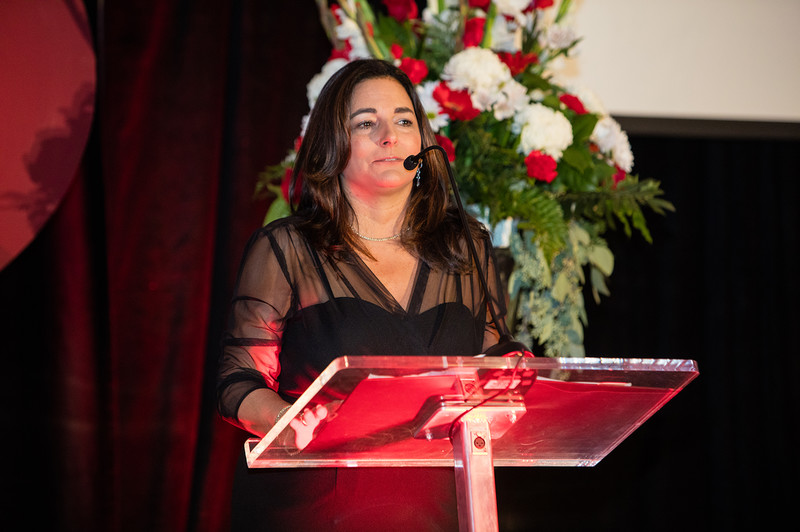Distinguished alumni award winner thrives in Bay Area
January 6, 2017
Every year Cal State East Bay gives out awards to alumni who are deemed distinguished by a committee of faculty and staff as well as the president of the university.
The most recent recipients of the 2016 Distinguished Alumni Awards were given out in October at the Hayward campus to Atul Dhablania class of 2002, Gaylord “Glenn” Henry class of 1966-1967, Nancy O’Malley class of 1977 and Kelly Bowers class of 2002.
All winners are nominated about six months in advance by any member of the university community, and the finalists are selected by a committee comprised of the Alumni Association president, the Associated Students, Inc. president or designee, the Academic Senate chair or designee, the vice president of University Advancement and the director of Alumni Relations, according to alumni director Penny Peak. The finalists are submitted to the university president who has the final say over who wins the award.
After it was established in 1985, the award was given to just one alumni until two years ago when school officials, led by President Leroy M. Morishita and director of University Events Richard Watters, decided to include all of the colleges and deans to honor four alumni per year, according to Peak.
All of the recipients achieved success in their respective fields but Bowers has made a local impact. Since she graduated from CSUEB in 2002, Bowers has been employed by the Livermore Valley Joint Unified School District, working her way up from a teacher to the superintendent position she has held since 2010. Bowers taught at every level before her ascension to the administrative ranks.
She received her teaching credential and master’s degree in educational leadership from CSUEB, but it wasn’t easy. While she was a student at East Bay, Bowers was a divorced single mom with a four-year-old son, not an ideal school situation.
“I would bring him to class with me,” Bowers said. “He would be good and color, they really worked around me, it was perfect.”
Bowers is an East Bay native from Alameda, where she attended public school before she received her undergraduate degree from UC Berkeley and attended CSUEB and Berkeley again for her postgraduate degrees.
However, education wasn’t always in the cards for Bowers. Her mother only completed eighth grade and her father had the most education in the family with a high school diploma. Bowers was the first person on her mother’s side of the family to finish high school and the first person in her entire family to graduate from college.
“My mother didn’t really know too much about education and its importance,” Bowers said. “She is the second generation from Italy and all she wanted us to do is go to prom and graduate, things she didn’t do.”
Bowers and her siblings took education and ran with it; they all eventually graduated from college and her brother became a self-made millionaire through billboard sales while her sister became a lawyer. All of Bowers’ kids are currently in college.
Bowers is familiar with ethnically diverse communities, as she has spent the majority of her life in cities like Alameda, Hayward, Berkeley and Union City. However, Livermore is not like a majority of the East Bay cities that are considered melting pots when it comes to ethnicity.
According to the city of Livermore, 65.5 percent of the population is white, a far cry from the 34.1 percent in Alameda County and 42.4 percent in the Bay Area at large.
“What we have here is poverty submerged in the suburbs,” Bowers said. “When you go to the suburbs there is the assumption of affluence, but for every fancy vineyard home you have the migrant worker who came here with very little and are still trying to establish themselves.”
According to Bowers, there are 36 different languages spoken by students in the LVJUSD and there are a slew of services provided by the district that include migrant education programs and services for parents and families.
“A lot of times the whole family isn’t intact and it often puts children in the position of caretaker because of the strenuous hours of work for the parents,” Bowers said. “We educate families on the importance of schooling, helping children stay in school and help the adults get their education level up as well. They can transfer units from whatever country of origin they are from and parents can even get their GED, citizenship and utilize career reentry services.”
In addition to services aimed at parental support, Bowers said there was a distinct digital advantage gap and the district offered a reduced fee Internet service for students families as well as laptops from grants and donations. Bowers mentioned that one school had a one to one ratio of laptops per students and she was hopeful through grants and donations eventually the entire district will have one laptop or tablet per student.
Bowers said that her East Bay upbringing and education have given her a distinct advantage when it comes to dealing with children and families in the area. She also credited CSUEB with her educational success, thanks in large part to the affordable classes, hybrid online learning and the personal attention she received because of the small class sizes.
“Eighty two percent of the administrative staff here at [LVJUSD] went to East Bay at some point for part of their education,” Bowers said. “It makes a difference.”
















